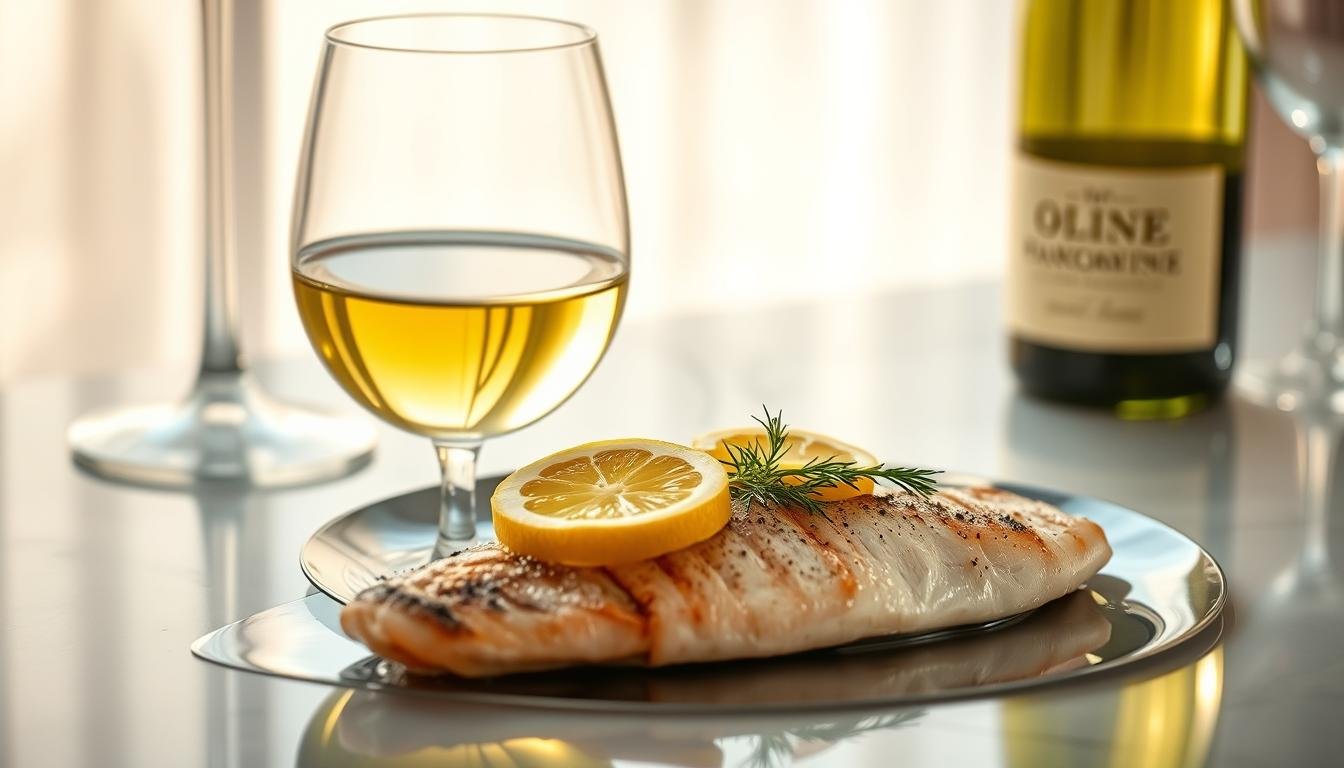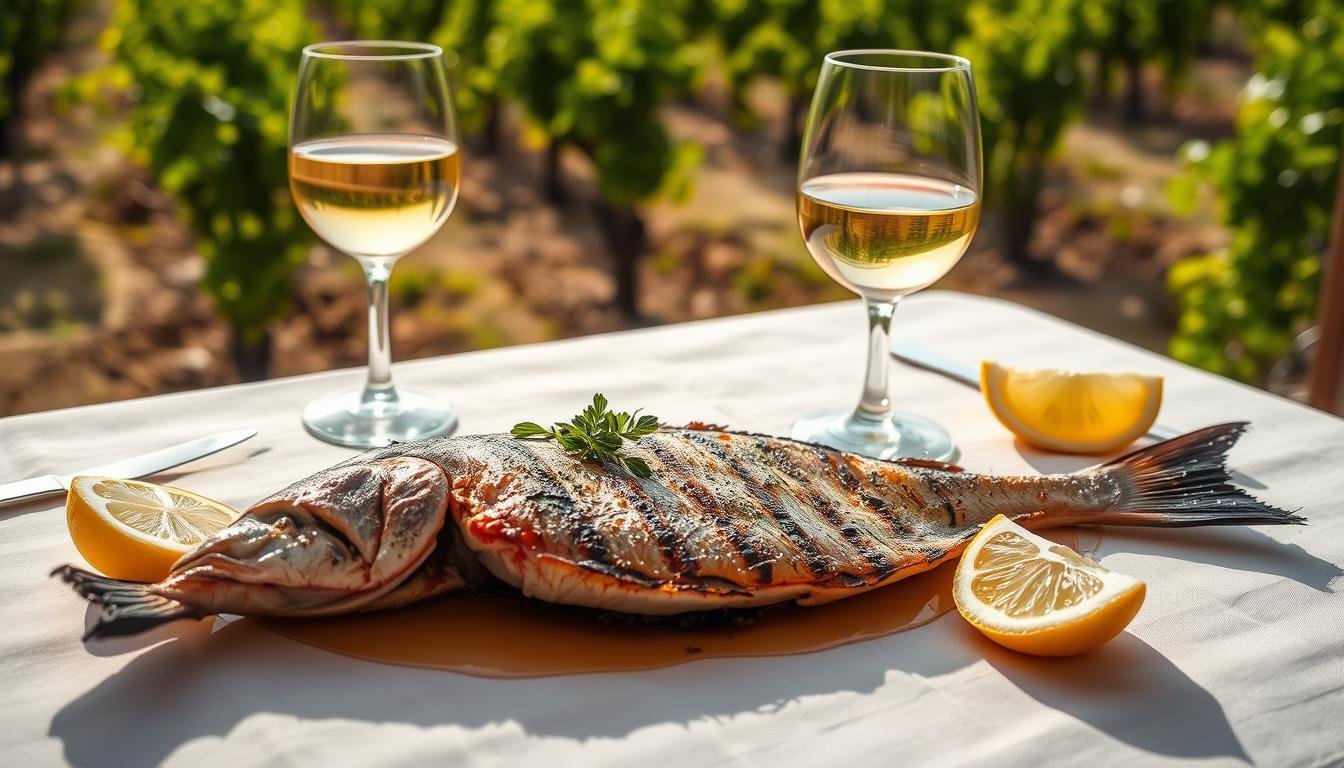As the winter season approaches, there’s nothing quite like a warm cup of mulled wine to bring people together during the holiday gatherings. The key to creating a truly delicious mulled wine experience lies in choosing the right wine that can hold up to heating and spicing without losing its character.
The perfect wine for mulled wine should have a good balance of flavors and be able to complement the added spices. Different wine varieties can contribute unique flavor profiles, ranging from fruity and jammy to rich and full-bodied options. By selecting the right wine, you can create a memorable mulled wine experience that will delight your guests and become a winter tradition in your home.
Key Takeaways
- Discover the perfect wines to create a delicious mulled wine experience.
- Learn why choosing the right wine is crucial for a balanced flavor.
- Understand how different wine varieties contribute to unique flavor profiles.
- Explore expert recommendations for wines that hold up well to heating and spicing.
- Find budget-friendly options for a memorable mulled wine experience.
What is Mulled Wine and Why is it Perfect for Winter?
As winter approaches, the tradition of drinking mulled wine becomes a cozy and inviting way to enjoy the season. Mulled wine is a warm, spiced alcoholic beverage made by heating red wine with various spices, sweeteners, and sometimes fruit, creating a comforting drink perfect for cold weather.
The Warming Appeal of Spiced Wine
The warming appeal of mulled wine comes from both the physical heat of the drink and the warming spices like cinnamon and cloves that create a cozy sensation when consumed. The combination of these elements makes mulled wine a perfect drink for winter gatherings.
Traditional Ingredients in Mulled Wine
Traditional ingredients in mulled wine include a robust red wine base, whole mulling spices (rather than ground to avoid grittiness), sweeteners like honey or sugar, and often citrus elements like orange slices. The drink’s low-maintenance nature makes it perfect for winter gatherings – it can be prepared in advance and kept warm for hours, allowing hosts to enjoy their company.
The Rich History Behind This Holiday Favorite
Mulled wine has a rich history that spans centuries, captivating the hearts of many during the holiday season. This beloved drink has its roots in ancient traditions, evolving over time to become a staple at modern Christmas markets.
From Ancient Rome to Modern Christmas Markets
The origins of mulled wine trace back to ancient Rome, where people would heat wine and add spices like pepper and honey to create a warm, medicinal drink. As the Roman Empire expanded, this practice spread throughout Europe, adapting to regional tastes and available ingredients. By the Middle Ages, mulled wine had become a winter festival staple, with the German tradition of Glühwein becoming particularly popular at Christmas markets.
Regional Variations: Glühwein, Vin Chaud, and Gløgg
Different regions have developed their unique versions of mulled wine. For instance, French Vin Chaud often includes star anise and honey, while Nordic Gløgg incorporates almonds and raisins. British mulled wine typically features more citrus flavors. This diversity in flavors and ingredients has contributed to the drink’s enduring popularity.
| Region | Mulled Wine Variation | Common Ingredients |
|---|---|---|
| Germany | Glühwein | Cinnamon, Cloves |
| France | Vin Chaud | Star Anise, Honey |
| Nordic Countries | Gløgg | Almonds, Raisins |
What Makes the Best Wine for Mulled Wine
The key to a great mulled wine lies in the wine itself, with certain characteristics standing out as particularly well-suited. When making mulled wine, the goal is to balance the flavors of the wine with the spices and sweeteners added to it.
Wine Characteristics to Look For
For a superior mulled wine, look for wines with jammy, fruit-forward flavors and notes of vanilla. A full-bodied wine with a subtly sweet to semi-dry profile is ideal. These characteristics complement the traditional mulling spices without being overpowered by them. Medium to full-bodied red wines featuring notes of berries, plums, or cherries are excellent choices.

Wine Varieties to Avoid
Avoid wines that are too bright or zesty, as well as those with significant oak influence or high tannin levels, as these can become unpleasantly bitter when heated. Similarly, wines that are too sweet or too dry should also be avoided. The best wines for mulled wine strike a balance between being flavorful and not so complex that their nuances are lost during heating.
| Characteristics | Ideal | To Avoid |
|---|---|---|
| Flavor Profile | Jammy, fruit-forward | Too bright, zesty |
| Body | Medium to full-bodied | Too light |
| Sweetness | Subtly sweet to semi-dry | Too sweet or too dry |
| Tannins | Moderate | Highly tannic |
Top Red Wine Varieties for Mulled Wine
Mulled wine enthusiasts know that the right red wine variety can elevate this winter favorite to new heights. The best red wines for mulled wine share certain characteristics, such as moderate tannins, prominent fruit flavors, and enough body to stand up to the addition of spices and heat.
Merlot
Merlot stands out as an excellent choice for mulled wine due to its soft tannins, medium body, and plush fruit flavors of plum and black cherry. These characteristics complement traditional mulling spices beautifully.

Zinfandel
Zinfandel, particularly Old Vine Zinfandel, offers jammy fruit characteristics and natural sweetness, reducing the need for additional sweeteners in your mulled wine recipe. Its bold flavors make it a classic choice for mulled wine.

Cabernet Sauvignon
Cabernet Sauvignon can work well for those who prefer a more structured mulled wine. Although its higher tannin content means it may benefit from additional sweetener to balance any potential bitterness, it provides a robust flavor profile. For more insights on how Cabernet Sauvignon compares to other varieties like Merlot, visit our detailed comparison here.

Best Merlot Wines for Mulled Wine
Merlot stands out as an ideal wine for mulled wine due to its rich, fruity flavors. Its bold and juicy fruit flavor profile, featuring notes of red cherry, plum, and cranberry, makes it a perfect candidate for mulling. When heated with spices, Merlot’s characteristics complement the traditional mulling spices, creating a warm and inviting drink.
Robert Mondavi Private Selection Merlot
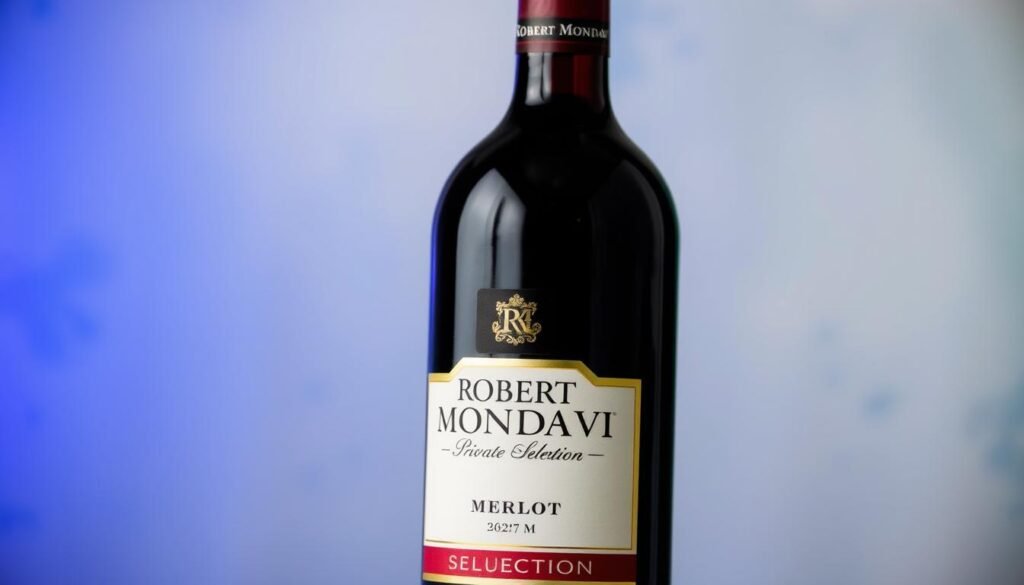
Robert Mondavi Private Selection Merlot is a top choice for mulled wine due to its accessible price point, typically under $12, and consistent quality with rich cherry and plum flavors. This California Merlot offers a perfect balance of fruit-forward character and subtle oak influence, creating a solid foundation for spices to build upon. The wine’s medium body and moderate tannin structure hold up well to heating without developing bitter notes.
Bonterra Organic Merlot
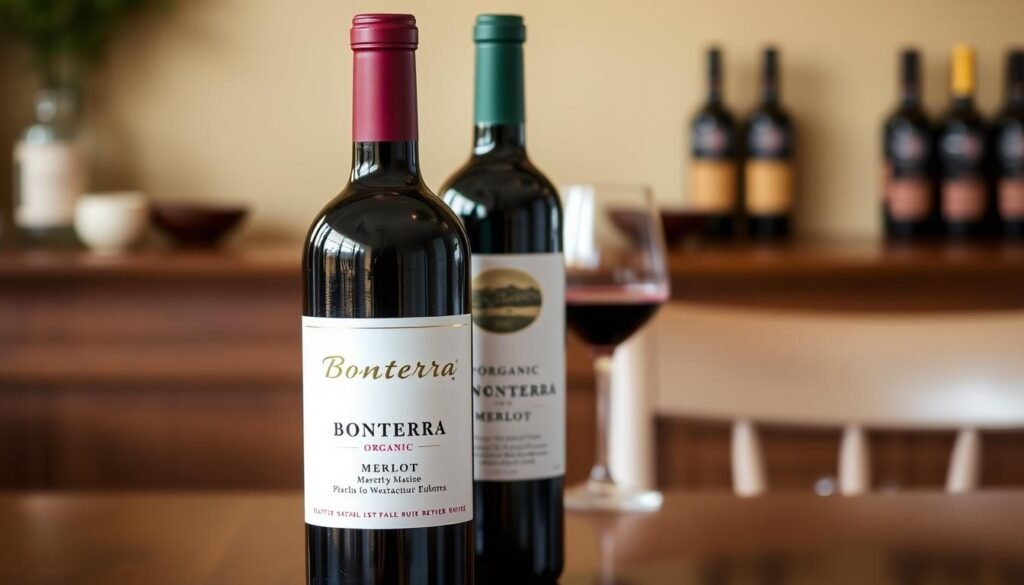
Bonterra Organic Merlot provides an excellent organic option with its distinctive herbal notes that complement traditional mulling spices like cinnamon and star anise. The sustainable farming practices behind Bonterra create a wine with pure fruit expression and balanced acidity that maintains its character even when heated and spiced. Both Robert Mondavi Private Selection Merlot and Bonterra Organic Merlot offer excellent value, proving that you don’t need to spend more than $15 on a bottle to create a delicious mulled wine.
Best Pinot Noir and Red Blends for Mulled Wine
For a truly exceptional mulled wine experience, selecting the right red wine is key. While various red wines can be used, some varieties stand out for their flavor profiles and how they complement the spices and sweetness added to mulled wine.
Apothic Red Blend
Apothic Red Blend is a popular choice for mulled wine due to its accessible flavor profile featuring pronounced dark fruit notes and a touch of natural sweetness. This blend combines Zinfandel, Merlot, Syrah, and Cabernet Sauvignon to create a smooth, jammy wine that maintains its character when heated with spices.

Campo Viejo Garnacha
Campo Viejo Garnacha from Spain offers bright red berry flavors and subtle spice notes that naturally complement traditional mulling spices like cinnamon and clove. The moderate price point of this wine, typically under $15, makes it a practical choice for larger gatherings.
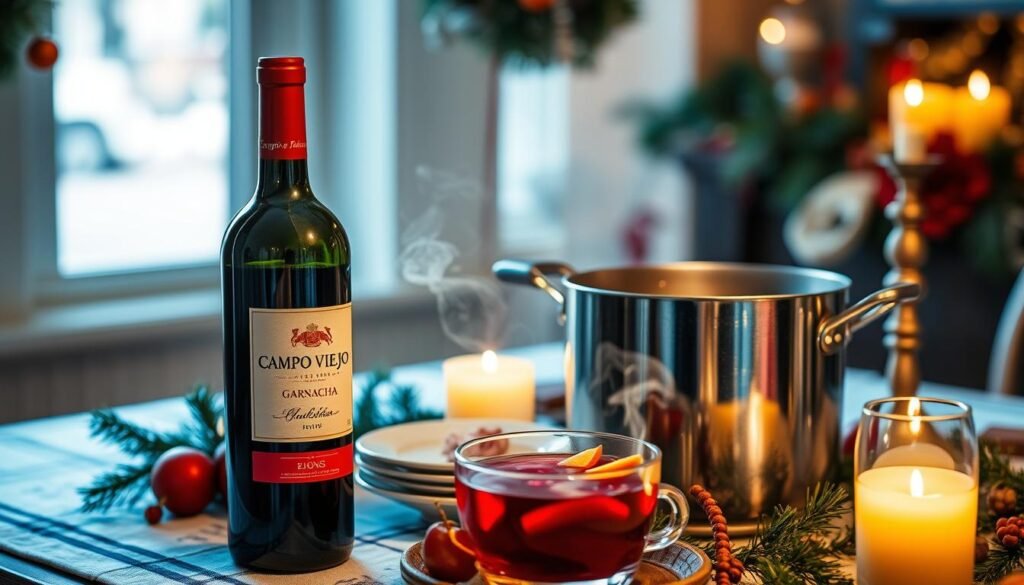
Both Apothic Red Blend and Campo Viejo Garnacha are excellent choices for mulled wine due to their flavor profiles and affordability. For those seeking a Pinot Noir option, look for fuller-bodied versions from warmer regions.
Essential Mulling Spices and Additional Ingredients
Mulled wine’s charm is significantly enhanced by the choice of mulling spices and other ingredients. The right combination can elevate the flavor, making it a perfect winter warmer.
Traditional Mulling Spices
Traditional mulling spices form the foundation of any good mulled wine recipe. These include cinnamon sticks, whole cloves, star anise, and freshly grated nutmeg. Using whole spices instead of ground versions imparts cleaner flavors and avoids gritty textures. Additional spices like cardamom pods, allspice berries, and fresh ginger slices can add unique aromatic dimensions.
Sweeteners and Liquor Add-ins
Sweeteners are crucial to balance the tannins in the wine and complement the spices. Options include honey, brown sugar, maple syrup, or agave nectar. Liquor add-ins like brandy, cognac, or orange liqueurs can boost alcohol content and add complexity. For those who enjoy dried fruit, adding raisins, dried cranberries, or dried cherries can create delicious edible garnishes.
| Spice/Ingredient | Flavor Profile |
|---|---|
| Cinnamon Sticks | Warm, sweet |
| Whole Cloves | Pungent, aromatic |
| Star Anise | Sweet, licorice-like |
How to Make the Perfect Mulled Wine at Home
To make delicious mulled wine at home, start by choosing a good red wine and your favorite spices. Making mulled wine is a straightforward process that involves heating the wine with spices and sweeteners to create a warm, comforting drink.
Step-by-Step Mulled Wine Recipe
Begin by pouring a full bottle of your chosen red wine into a large, non-reactive pot, such as one made of stainless steel or enameled cast iron. Add your selected mulling spices and sweetener to the pot. The key to making great mulled wine is to heat it gently; never let it boil. Keep the heat low and aim for a gentle simmer around 160°F to preserve the alcohol content and prevent bitter flavors. Allow the mixture to simmer for at least 30 minutes, but it can simmer for up to 3 hours for deeper flavor development. Taste periodically and adjust the sweetness and spice levels as needed.
Tips to Avoid Common Mulled Wine Mistakes
Common mistakes when making mulled wine include using ground spices, which can create a gritty texture, boiling the mixture, which vaporizes the alcohol and creates bitter flavors, and not tasting as you go to make adjustments. To serve, strain out the whole spices and fruit slices, then pour the mulled wine into heatproof mugs or glasses. Garnish with fresh cinnamon sticks, star anise, or orange slices for a warm and inviting presentation.
Delicious Food Pairings for Mulled Wine
The warm, spiced flavors of mulled wine make it an ideal companion for rich and savory foods during the winter months. This versatile drink can be paired with a variety of dishes to enhance the holiday dinner experience.
Cheese and Charcuterie Pairings
Mulled wine pairs exceptionally well with rich, creamy cheeses like Brie and aged Gouda. The wine’s spices cut through the richness while complementing the complex flavors. For an authentic European Christmas markets experience, serve your mulled wine alongside raclette or a cheese fondue dinner.
| Cheese | Characteristics | Pairing Notes |
|---|---|---|
| Brie | Creamy, soft | Spices in mulled wine complement its richness |
| Aged Gouda | Nutty, rich | The wine’s spices enhance its complex flavors |
Sweet Treats and Holiday Desserts
Sweet treats with complementary spice profiles work beautifully with mulled wine. Gingerbread cookies and spiced fruit cakes echo the flavors in the wine without competing with them. Roasted nuts, particularly those with sweet glazes or warming spices, provide textural contrast and shareable snacking options.
Conclusion: Enjoying Your Perfect Cup of Mulled Wine
Mulled wine is more than just a drink; it’s an experience that combines warmth, spices, and togetherness. Creating the perfect cup of mulled wine at home is both an art and a simple pleasure that can become a cherished winter tradition.
To make the best mulled wine, start with the right wine variety – one that’s fruity and not too tannic. Don’t be afraid to experiment with different combinations of spices, sweeteners, and add-ins to develop your signature mulled wine recipe.
The beauty of mulled wine lies in its flexibility – it can be prepared in advance, scaled up for gatherings, or made in small batches for quiet evenings at home. As you perfect your technique, you’ll discover that the process becomes as meaningful as the delicious drink you’ve created.



